I’m A Huge Fan Of How Rhodochrosite Can Either Look Like Beautiful Pink Flowers, Like Pointy Red Crystals,
I’m a huge fan of how rhodochrosite can either look like beautiful pink flowers, like pointy red crystals, like little Barbie-pink orbs, or like meat

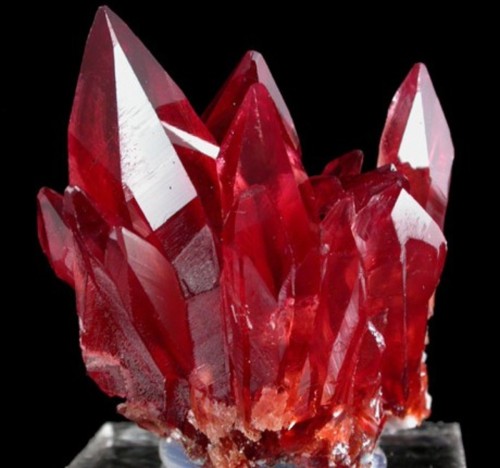



[ image description: rhodochrosite in each of the previously described forms, ending with some rhodochrosite stalactite chunks that look like breaded hams and one piece that looks like a raw steak growing out of a rock. ]
More Posts from Sciencebloggin and Others
So Google does math for you??
division

square roots

dividing percentages

IT EVEN FOILS

beautiful.









Ocean Jasper sphere PNGs

David Szakaly - 2019

Voyager 1’s approach to Saturn, 1980.

With the addition of Saturn, the James Webb Space Telescope has finally captured all four of our Solar System's giant worlds.
JWST's observations of the ringed planet, taken on 25 June 2023, have been cleaned up and processed, giving us a spectacular view of Saturn's glorious rings, shining golden in the darkness.
By contrast, the disk of Saturn is quite dark in the new image, lacking its characteristic bands of cloud, appearing a relatively featureless dim brown.
This is because of the wavelengths in which JWST sees the Universe – near- and mid-infrared.
These wavelengths of light are usually invisible to the naked human eye, but they can reveal a lot.
For example, thermal emission – associated with heat – is dominated by infrared wavelengths.
When you're trying to learn about what's going on inside a planet wrapped in thick, opaque clouds, studying its temperature is a valuable way to go about it.
Some elements and chemical processes emit infrared light, too. Seeing the planets of the Solar System in wavelengths outside the narrow range admitted by our vision can tell us a lot more about what they have going on.

Saturn
As we saw last week, when we clapped eyes on the raw JWST Saturn images, the observations involved filters that dimmed the light of the planet, while allowing light from the rings and moons to shine brightly.
This is so a team led by planetary scientist Leigh Fletcher of the University of Leicester in the UK can study the rings and moons of Saturn in more detail.
They hope to identify new ring structures and, potentially, even new moons orbiting the gas giant.
The image above shows three of Saturn's moons, Dione, Enceladus and Tethys, to the left of the planet.
Although dim, the disk of the planet also reveals information about Saturn's seasonal changes.
The northern hemisphere is reaching the end of its 7-year summer, but the polar region is dark. An unknown aerosol process could be responsible.
Meanwhile, the atmosphere around the edges of the disk appears bright, which could be the result of methane fluorescence, or the glow of trihydrogen, or both. Further analysis could tell us which.

Jupiter
Jupiter was the first of the giant planets to get the JWST treatment, with images dropping in August of last year – and boy howdy were they stunning.
The spectacular detail seen in the planet's turbulent clouds and storms was perhaps not entirely surprising.
However, we also got treated to some rarely seen features: the permanent aurorae that shimmer at Jupiter's poles, invisible in optical wavelengths, and Jupiter's tenuous rings.
We also saw two of the planet's smaller, lesser-known moons, Amalthea and Adrastea, with fuzzy blobs of distant galaxies in the background.
"This one image sums up the science of our Jupiter system program, which studies the dynamics and chemistry of Jupiter itself, its rings, and its satellite system," said astronomer Thierry Fouchet of Paris Observatory in France, who co-led the observations.

Neptune
Observations of Neptune arrived in the latter half of September 2022.
Because Neptune is so very far away, it tends to get a little neglected; you're probably used to seeing, if anything, the images taken by Voyager 2 when it flew past in 1989.
JWST's observations gave us, for the first time in more than 30 years, a new look at the ice giant's dainty rings – and the first ever in infrared.
It also revealed seven of Neptune's 14 known moons, and bright spots in its atmosphere.
Most of those are storm activity, but if you look closely, you'll see a bright band circling the planet's equator.
This had never been seen before and could be, scientists say, a signature of Neptune's global atmospheric circulation.

Uranus
Uranus is also pretty far away, but it's also a huge weirdo. Although very similar to Neptune, the two planets are slightly different hues, which is something of a mystery.
Uranus is also tipped sideways, which is challenging to explain too.
JWST's observations, released in April 2023, aren't solving these conundrums.
However, they have revealed 11 of the 13 structures of the incredible Uranian ring system and an unexplained atmospheric brightening over the planet's polar cap.
JWST has a lot to say about the early Universe; but it's opening up space science close to home, too.
As its first year of operations comes to an end, we can't help but speculate what new wonders will be to come in the years ahead.

Top: Jupiter - Neptune / Bottom: Uranus - Saturn
Credit: NASA

A picture demonstrating how smoke is particulate matter suspended in air.
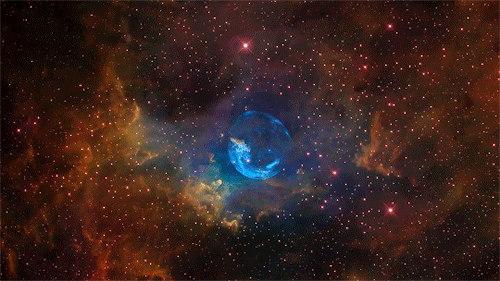
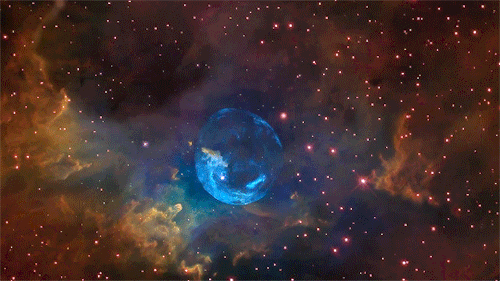
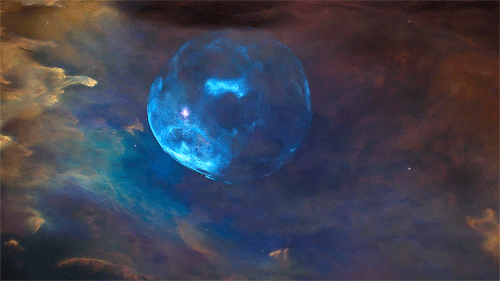
Hubble just spotted an enormous bubble in space
A series of images taken by Hubble shows a star blowing a massive bubble in space. Nicknamed the “Bubble Nebula,” it spans about 7 light-years across. The star creating the bubble is about 45 times the mass of our sun. Here’s why the bubble is forming.
Follow @the-future-now


Fluorite
Locality: Diana Maria Mine, Rogerley Quarry, Frosterley, County Durham, United Kingdom
Size: 2.6 × 2.2 × 2 cm
Do you ever think about Doggerland?
Like how fucked up is it that it’s just….. gone.

I tend to forget about it and then when I remember it again I’m like “Oh yeah! There’s like an entire country sized stretch of land that’s just fucking GONE.
well…. “gone”….

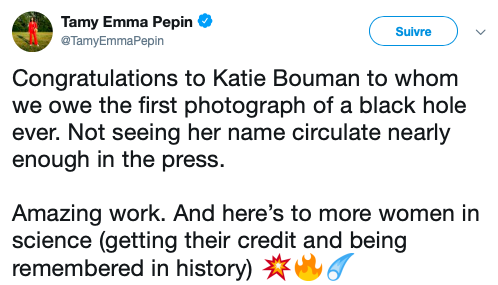
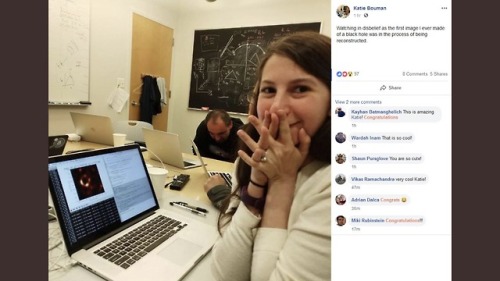
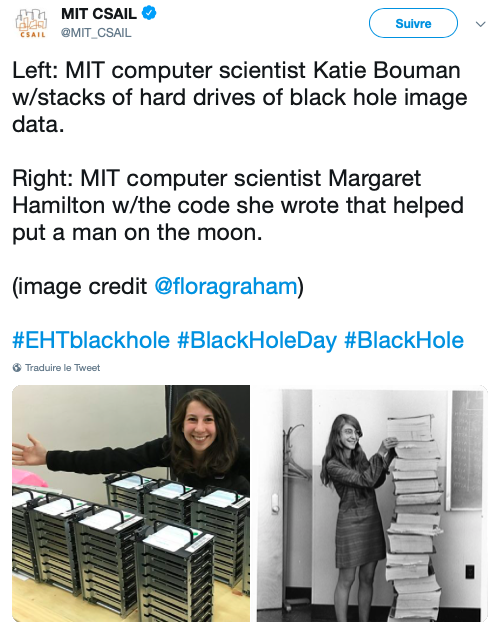


“our work should equip the next generation of women to outdo us in every field this is the legacy we’ll leave.”
-
 filledwithwater reblogged this · 3 weeks ago
filledwithwater reblogged this · 3 weeks ago -
 yourlocalkandikid liked this · 3 weeks ago
yourlocalkandikid liked this · 3 weeks ago -
 i-eat-battery-acid reblogged this · 3 weeks ago
i-eat-battery-acid reblogged this · 3 weeks ago -
 rootbeer-queer liked this · 3 weeks ago
rootbeer-queer liked this · 3 weeks ago -
 goblinofthelaboratory reblogged this · 3 weeks ago
goblinofthelaboratory reblogged this · 3 weeks ago -
 waves-mp3 reblogged this · 3 weeks ago
waves-mp3 reblogged this · 3 weeks ago -
 oceanwaves-mp3 liked this · 3 weeks ago
oceanwaves-mp3 liked this · 3 weeks ago -
 brokendoor16 liked this · 3 weeks ago
brokendoor16 liked this · 3 weeks ago -
 nyehhyeh liked this · 3 weeks ago
nyehhyeh liked this · 3 weeks ago -
 littlelav107 reblogged this · 3 weeks ago
littlelav107 reblogged this · 3 weeks ago -
 umbris-regni liked this · 3 weeks ago
umbris-regni liked this · 3 weeks ago -
 shattered-shards reblogged this · 3 weeks ago
shattered-shards reblogged this · 3 weeks ago -
 shattered-shards liked this · 3 weeks ago
shattered-shards liked this · 3 weeks ago -
 sly-is-my-name-loving-is-my-game reblogged this · 3 weeks ago
sly-is-my-name-loving-is-my-game reblogged this · 3 weeks ago -
 i-can-kazoo reblogged this · 3 weeks ago
i-can-kazoo reblogged this · 3 weeks ago -
 dawnbrigayde-redirect liked this · 3 weeks ago
dawnbrigayde-redirect liked this · 3 weeks ago -
 dstantstargazer reblogged this · 3 weeks ago
dstantstargazer reblogged this · 3 weeks ago -
 plantlegs liked this · 3 weeks ago
plantlegs liked this · 3 weeks ago -
 pikespendragon67 liked this · 3 weeks ago
pikespendragon67 liked this · 3 weeks ago -
 miurathreebays reblogged this · 3 weeks ago
miurathreebays reblogged this · 3 weeks ago -
 miurathreebays liked this · 3 weeks ago
miurathreebays liked this · 3 weeks ago -
 abandonedknowledge reblogged this · 3 weeks ago
abandonedknowledge reblogged this · 3 weeks ago -
 abandonedknowledge liked this · 3 weeks ago
abandonedknowledge liked this · 3 weeks ago -
 mydayinthebuilding liked this · 3 weeks ago
mydayinthebuilding liked this · 3 weeks ago -
 odeggy liked this · 3 weeks ago
odeggy liked this · 3 weeks ago -
 norbah reblogged this · 3 weeks ago
norbah reblogged this · 3 weeks ago -
 fatickono reblogged this · 3 weeks ago
fatickono reblogged this · 3 weeks ago -
 fatickono liked this · 3 weeks ago
fatickono liked this · 3 weeks ago -
 lumhere liked this · 3 weeks ago
lumhere liked this · 3 weeks ago -
 ma-mooba reblogged this · 3 weeks ago
ma-mooba reblogged this · 3 weeks ago -
 ma-mooba liked this · 3 weeks ago
ma-mooba liked this · 3 weeks ago -
 gamblingfortime liked this · 3 weeks ago
gamblingfortime liked this · 3 weeks ago -
 livingfurnace reblogged this · 3 weeks ago
livingfurnace reblogged this · 3 weeks ago -
 livingfurnace liked this · 3 weeks ago
livingfurnace liked this · 3 weeks ago -
 theonnor liked this · 3 weeks ago
theonnor liked this · 3 weeks ago -
 heyitsalex14 liked this · 3 weeks ago
heyitsalex14 liked this · 3 weeks ago -
 typemoonster liked this · 3 weeks ago
typemoonster liked this · 3 weeks ago -
 atlasaurelius reblogged this · 3 weeks ago
atlasaurelius reblogged this · 3 weeks ago -
 insaneinthearazometrain reblogged this · 3 weeks ago
insaneinthearazometrain reblogged this · 3 weeks ago -
 insaneinthearazometrain liked this · 3 weeks ago
insaneinthearazometrain liked this · 3 weeks ago -
 nonexistent-tales reblogged this · 3 weeks ago
nonexistent-tales reblogged this · 3 weeks ago -
 nonexistent-tales liked this · 3 weeks ago
nonexistent-tales liked this · 3 weeks ago -
 d3adhanded reblogged this · 3 weeks ago
d3adhanded reblogged this · 3 weeks ago -
 d3adhanded liked this · 3 weeks ago
d3adhanded liked this · 3 weeks ago -
 luckyrunawaysoul reblogged this · 3 weeks ago
luckyrunawaysoul reblogged this · 3 weeks ago -
 candycorncandle reblogged this · 3 weeks ago
candycorncandle reblogged this · 3 weeks ago -
 extrinsicalmadness reblogged this · 3 weeks ago
extrinsicalmadness reblogged this · 3 weeks ago -
 spearmintseaslug liked this · 3 weeks ago
spearmintseaslug liked this · 3 weeks ago -
 spearmintseaslug reblogged this · 3 weeks ago
spearmintseaslug reblogged this · 3 weeks ago -
 mayalindsey reblogged this · 3 weeks ago
mayalindsey reblogged this · 3 weeks ago
